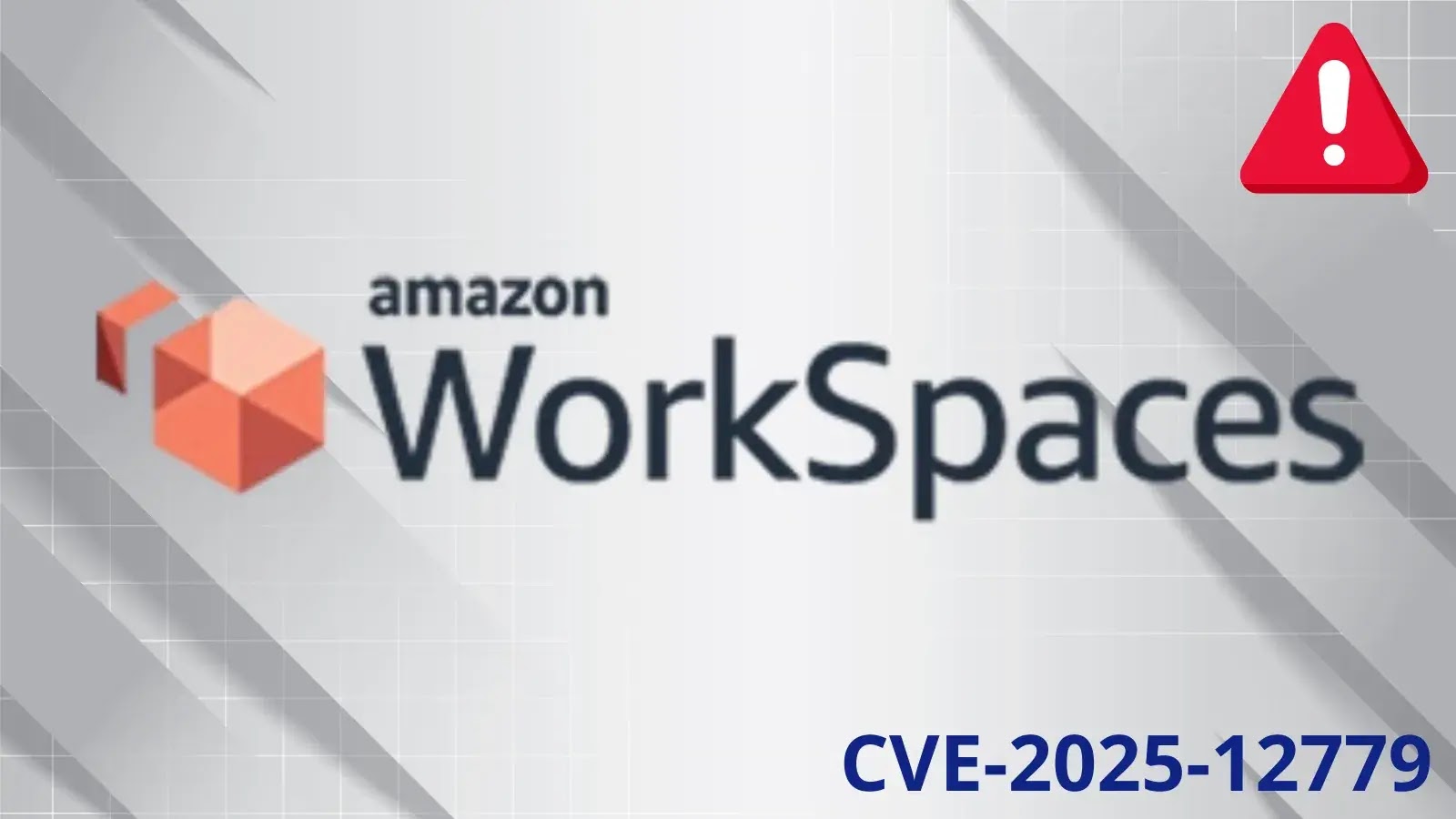
Amazon WorkSpaces For Linux Vulnerability Let Attackers Extract Valid Authentication Token
In the intricate landscape of enterprise technology, the security of remote access solutions is paramount. Recently, Amazon disclosed a critical vulnerability in its WorkSpaces client for Linux, a discovery that sends a ripple of concern through organizations heavily invested in their Desktop-as-a-Service (DaaS) platform. This significant flaw could potentially enable unauthorized individuals to extract sensitive authentication tokens, thereby gaining illicit access to other users’ WorkSpaces environments.
This blog post delves into the specifics of this vulnerability, its potential implications for businesses, and, most importantly, the proactive steps necessary for remediation. For IT professionals, security analysts, and developers working with Amazon WorkSpaces, understanding this threat is not just beneficial—it’s essential.
Understanding the Amazon WorkSpaces Linux Vulnerability
The vulnerability, officially tracked as CVE-2025-12779, centers on the Amazon WorkSpaces client for Linux. At its core, the flaw allows for the unauthorized extraction of valid authentication tokens. An authentication token is effectively a digital passport, granting access to specific resources and functionalities. When such a token falls into the wrong hands, the integrity and confidentiality of an entire WorkSpace session, and potentially other linked corporate resources, are severely compromised.
This directly impacts organizations that rely on Amazon WorkSpaces for secure, scalable remote work infrastructure. The ease with which an attacker could potentially obtain these tokens, without needing to directly compromise the WorkSpace itself, highlights a significant security gap that requires immediate attention.
Impact and Potential Exploitation
The implications of CVE-2025-12779 are far-reaching. Successful exploitation could lead to:
- Unauthorized Access: Attackers could impersonate legitimate users, gaining full access to their WorkSpaces. This includes access to files, applications, and network resources available within that WorkSpace.
- Data Exfiltration: With unauthorized access, sensitive corporate data stored within the WorkSpace or accessible through it could be stolen.
- Lateral Movement: An attacker might use the compromised WorkSpace as a stepping stone to gain further access to the corporate network, escalating privileges and compromising additional systems.
- Disruption of Operations: Malicious actors could corrupt data, install malware, or disrupt critical business operations from within a compromised WorkSpace.
- Reputational Damage: Data breaches stemming from this vulnerability could severely damage an organization’s reputation and lead to regulatory fines.
The key aspect of this vulnerability is the ability to extract valid tokens. This means an attacker doesn’t need to bypass complex authentication mechanisms; they simply need to acquire an already established, legitimate token. This significantly lowers the bar for a successful attack.
Affected Versions and Scope
While the specific affected client versions are not detailed in the provided source, the disclosure indicates that multiple client versions of the Amazon WorkSpaces client for Linux are impacted. This underscores the need for all organizations utilizing this client to review their deployments and prioritize updates.
The vulnerability’s scope extends to any organization using the Amazon WorkSpaces client for Linux for their remote workforce. Given the increasing reliance on DaaS solutions for flexible work arrangements, a large number of enterprises are potentially at risk.
Remediation Actions
Prompt and decisive action is critical to mitigate the risks posed by CVE-2025-12779. Organizations should implement the following remediation steps immediately:
- Patch and Update: The most crucial step is to apply the security updates released by Amazon for the WorkSpaces client for Linux. Ensure all client installations are upgraded to the patched versions as soon as they become available. Regularly check Amazon’s official security advisories and release notes.
- Review and Enforce Least Privilege: Even after patching, regularly review user access permissions within WorkSpaces. Ensure users only have access to the resources absolutely necessary for their roles. This limits the damage an attacker can inflict even if a token is compromised.
- Implement Multi-Factor Authentication (MFA): While token extraction bypasses typical password authentication, MFA adds an additional layer of security that can deter or complicate an attacker’s efforts to fully utilize a stolen token.
- Monitor for Suspicious Activity: Enhance monitoring for unusual login patterns, unexpected resource access, or abnormal network activity originating from WorkSpaces. Leverage AWS CloudTrail logs, Amazon GuardDuty, and other security tools to detect anomalies.
- Educate Users: Remind users about phishing attempts and social engineering tactics that could be used to trick them into revealing tokens or credentials.
- Endpoint Security: Ensure robust endpoint detection and response (EDR) solutions are active on all Linux clients accessing WorkSpaces, which can help detect and prevent the initial compromise that might lead to token extraction.
Tools for Detection and Mitigation
Leveraging appropriate tools forms a vital part of a comprehensive security strategy. Here’s a table of tools that can assist in detecting potential compromises and improving overall security posture against vulnerabilities like CVE-2025-12779:
| Tool Name | Purpose | Link |
|---|---|---|
| AWS CloudTrail | Logging and monitoring API calls and user activity across AWS services, including WorkSpaces. | https://aws.amazon.com/cloudtrail/ |
| Amazon GuardDuty | Intelligent threat detection service that continuously monitors for malicious activity and unauthorized behavior. | https://aws.amazon.com/guardduty/ |
| AWS Security Hub | Centralized view of security alerts and security posture across AWS accounts. | https://aws.amazon.com/security-hub/ |
| Endpoint Detection and Response (EDR) Solutions | Detecting and responding to advanced threats on client endpoints (e.g., CrowdStrike Falcon, SentinelOne). | (Refer to specific vendor websites) |
| Vulnerability Management Software | Scanning for vulnerabilities, including outdated software versions on client machines. | (Refer to specific vendor websites) |
Key Takeaways for Security Professionals
The disclosure of CVE-2025-12779 serves as a crucial reminder concerning the ongoing vigilance required for cloud-based desktop environments. Organizations must prioritize regular patching and updates, especially for client-side applications that interface with critical cloud services. Comprehensive monitoring, coupled with robust identity and access management practices, forms the bedrock of a resilient cybersecurity posture. Proactive communication with vendors like Amazon and staying informed through official channels are indispensable for effective risk management.





